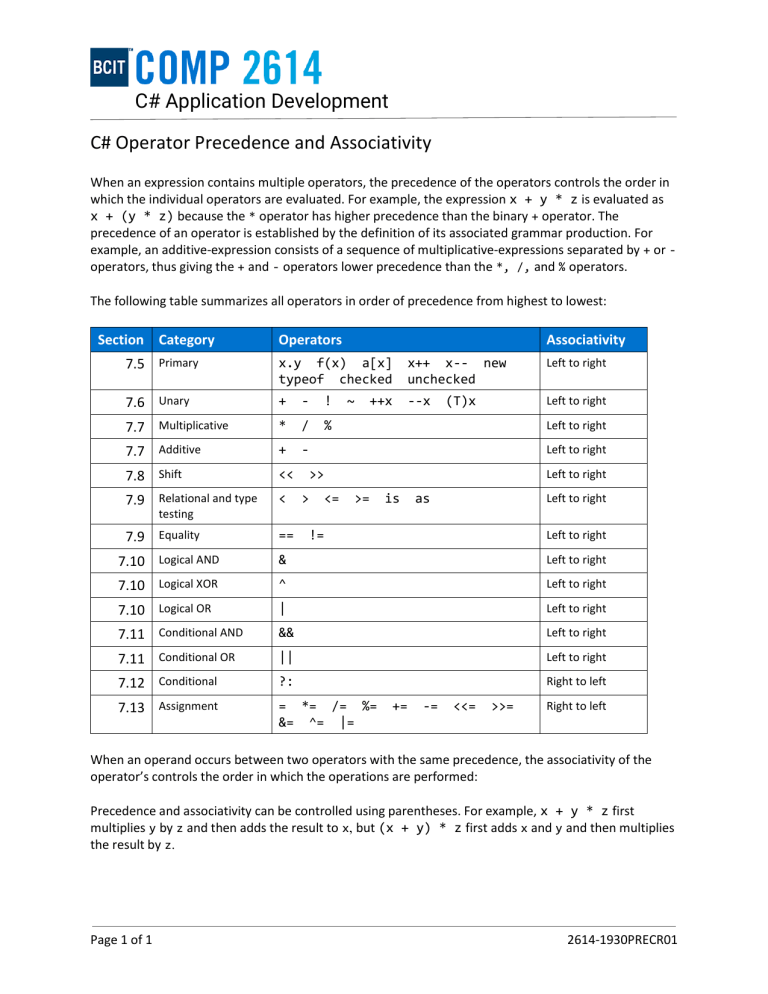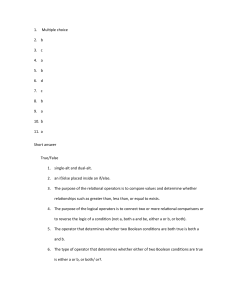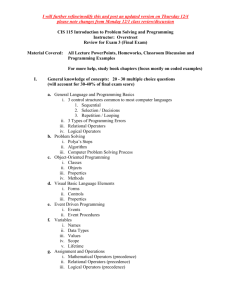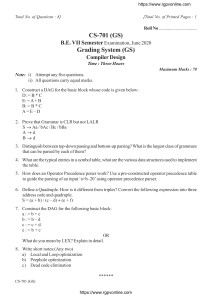
C# Application Development C# Operator Precedence and Associativity When an expression contains multiple operators, the precedence of the operators controls the order in which the individual operators are evaluated. For example, the expression x + y * z is evaluated as x + (y * z) because the * operator has higher precedence than the binary + operator. The precedence of an operator is established by the definition of its associated grammar production. For example, an additive-expression consists of a sequence of multiplicative-expressions separated by + or operators, thus giving the + and - operators lower precedence than the *, /, and % operators. The following table summarizes all operators in order of precedence from highest to lowest: Section Category Operators Associativity 7.5 Primary x.y f(x) a[x] typeof checked x++ x-- new unchecked Left to right 7.6 Unary + - ! --x Left to right 7.7 Multiplicative * / % 7.7 Additive + - 7.8 Shift << 7.9 Relational and type < 7.9 Equality == ~ ++x (T)x Left to right Left to right >> > Left to right <= >= is as Left to right testing != Left to right 7.10 Logical AND & Left to right 7.10 Logical XOR ^ Left to right 7.10 Logical OR | Left to right 7.11 Conditional AND && Left to right 7.11 Conditional OR || Left to right 7.12 Conditional ?: Right to left 7.13 Assignment = *= /= %= &= ^= |= += -= <<= >>= Right to left When an operand occurs between two operators with the same precedence, the associativity of the operator’s controls the order in which the operations are performed: Precedence and associativity can be controlled using parentheses. For example, x + y * z first multiplies y by z and then adds the result to x, but (x + y) * z first adds x and y and then multiplies the result by z. Page 1 of 1 2614-1930PRECR01




